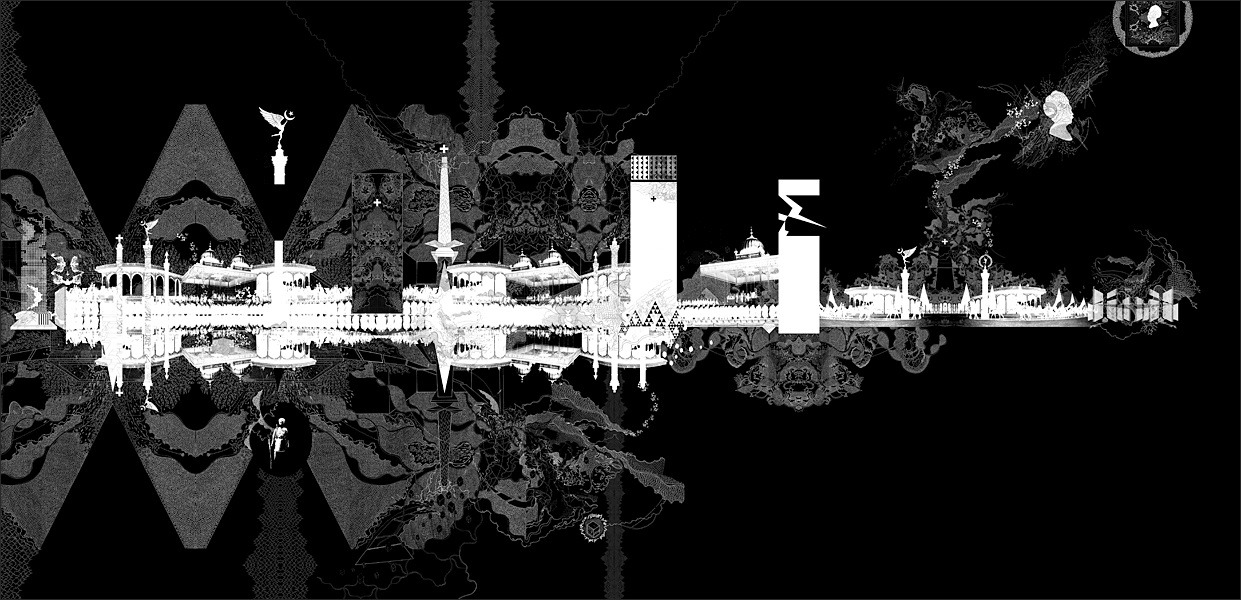· 4 min read
Robert Rogers presents his work (and book)

Rob Rogers is not to confuse with the famous Richard Rogers. Rogers Partners’ work is nonetheless very interesting, from what I have heard and seen on Monday at the Center for Architecture. The architect presents his brand new book, and a few of his projects.
The idea of doing a book came in the context of NY, where the architectural practice has changed a lot recently. The goal was to clarify, understand, evaluate the values that guide [their] practice, impact [their] thinking. This analysis is processed through different layers. The book is a collection, a body of intents as much as a body of past works.
Viewpoints, or architectural approach
- Impact of small things Design is supported by evocative and numerous references. The book presents 25 reference images per project.
- Delight How do we translate the fun we have doing what we do into physical space? The architect compares this idea to a natural condition that is strikingly beautiful by its geometry, its meaning, its elaborated form, … Or it is about simple beauty, that appers by itself in the physical world. Delight is also triggered by materiality.
- Authenticity, as value and good work It is not necessarily intentional, but it is strong and clear, obvious to everyone. Geometry has this character. The program can also be very authentic when the building is doing just what it has to do.
Projects
In the design process, the architects collect images, have many conversations and eventually end up to a solution that is better than others.
President’s park in Washington
 A new relation is to establish between the White House and the public through visual interaction. The heavy historical background and the new fabric are integrated.
A new relation is to establish between the White House and the public through visual interaction. The heavy historical background and the new fabric are integrated.
Henderson Hopkins school in Baltimore
 This project, which won a 2015 AIA Design Award features a close look at the program. Depending on their age, children are divided in different houses which have different settings of colors, proportions, materials, characters. Also, a strong design intention was to develop a sense of integration in the neighborhood, considering the street as the primary social space. Physically, the scale, character and materials are the re-interpretation of the local architecture. The social fabric of the neighborhood is embedded in the circulation of the building itself.
This project, which won a 2015 AIA Design Award features a close look at the program. Depending on their age, children are divided in different houses which have different settings of colors, proportions, materials, characters. Also, a strong design intention was to develop a sense of integration in the neighborhood, considering the street as the primary social space. Physically, the scale, character and materials are the re-interpretation of the local architecture. The social fabric of the neighborhood is embedded in the circulation of the building itself.
 SandRidge Commons Oklahoma City
SandRidge Commons Oklahoma City
 The architect presented to the (corporate) client this scheme of a fragmented impact on the city, as opposed to one high point (tower) or to an inward-oriented building (block). It is then more powerful to activate public space. In this windy region, windbreaks were designed using the landscape. A good public space is not about creating many spaces that are good all the time; instead, one will be good in summer, the other in winter, or on a sunny day ,etc. Also, different identities were designed: intimate space, common space, programmable space. Overall, an interesting public-private overlap spreads between the buildings.
The architect presented to the (corporate) client this scheme of a fragmented impact on the city, as opposed to one high point (tower) or to an inward-oriented building (block). It is then more powerful to activate public space. In this windy region, windbreaks were designed using the landscape. A good public space is not about creating many spaces that are good all the time; instead, one will be good in summer, the other in winter, or on a sunny day ,etc. Also, different identities were designed: intimate space, common space, programmable space. Overall, an interesting public-private overlap spreads between the buildings.
Power plant in Syracuse
 Clients wanted the factory to look better, but it is not just about the look. The architect proposes a whole new program to engage the community, namely through open circulation and a whole new educational project, of which the success is quite hard to foresee.
Clients wanted the factory to look better, but it is not just about the look. The architect proposes a whole new program to engage the community, namely through open circulation and a whole new educational project, of which the success is quite hard to foresee.
Water works, Minneapolis
 This project, located on the Mississippi main waterfall, wants to reconnect this peculiar site with the city, by telling the story of this vibrant history.
This project, located on the Mississippi main waterfall, wants to reconnect this peculiar site with the city, by telling the story of this vibrant history.
Constitution Garden in Washington
 This garden is like a park: it is a place to rest. The landscape design highlights its ecology, while the pavilion deals with views, movement, and axis leading to major monuments.
This garden is like a park: it is a place to rest. The landscape design highlights its ecology, while the pavilion deals with views, movement, and axis leading to major monuments.
Q&A
Let me conclude with a few phrases from the architect picked up during the Q&A session closing the event.
We try to be humble, to work with things. […] A project is as much about landscape as it is about architecture. […] None of the projects look alike because they are not at the same site and we don’t have the same client twice. Why a form would be good more than once? I don’t know!




